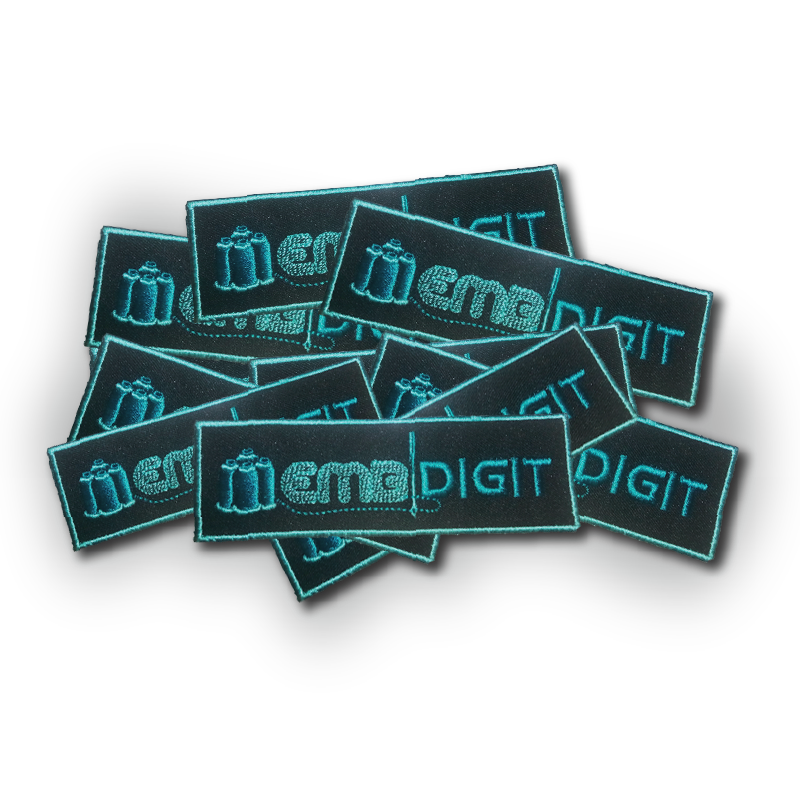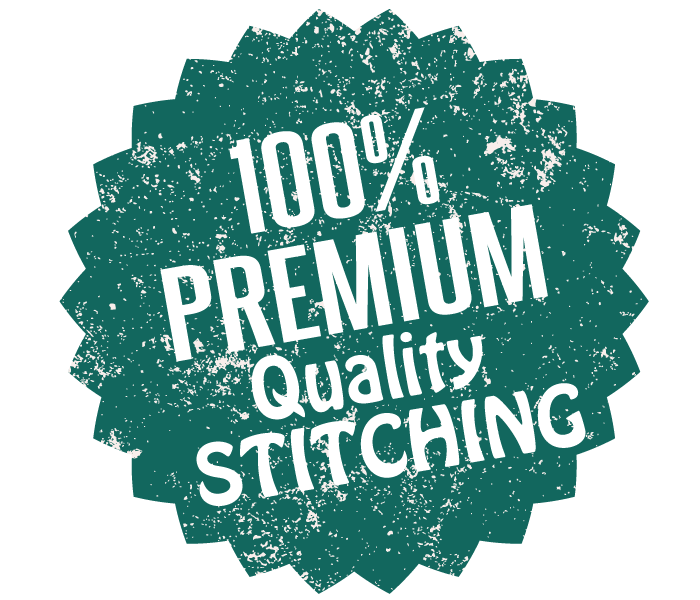Custom Iron On Patches
custom Iron on patches are the perfect way to add a personal touch and unique style to your clothing, bags, and accessories. With these versatile patches, you can showcase your creativity and display your favorite designs. Whether you're a fashion enthusiast, DIY lover, or business owner, custom embroidered iron-on patches offer a fun and easy way to express yourself and make a statement wherever you go. Let your imagination run wild and turn your ideas into wearable art with custom iron-on patches!

How to Easily Apply Iron-on Patches to Your Clothes
Applying logo iron-on patches to your clothes is a breeze! First, grab your favorite patch design or create a custom digitizing one. Then, pick the clothing item you want to jazz up; make sure it's made of fabric suitable for ironing, like cotton or denim.
Applying Embroidery Iron On Patch to Clothes:
Here's how to do it:
Ta-da! Your iron-on patch is now securely attached. If you want extra durability, you can sew around the edges, but it's optional. Get ready to rock your new, customized clothes with style and ease!
What Material Does Iron On Patch Adhere to?
Iron-on patches adhere to various materials, but they work best on fabrics that can withstand heat and pressure. Some common materials that iron-on patches adhere to include:
It's essential to avoid using iron-on patches for clothes that can melt or be damaged by high heat, such as plastic, vinyl, or delicate synthetic fabrics. Additionally, materials with water-repellent or water-resistant coatings may not provide a suitable surface for iron-on adhesion.
Before applying an iron-on patch, always read the instructions provided by the patch manufacturer and test a small area of the fabric to ensure compatibility. Following these guidelines will ensure that your iron-on patches adhere securely and look fantastic on your chosen clothing items.
Ideal Temperature To Use To Iron-On Logo Patches:
The best iron temperature to use for iron-on patches typically depends on the type of adhesive used in the patch. Most 3d puff embroidery iron-on patches come with specific instructions regarding the recommended iron temperature. It's crucial to follow these instructions to ensure the adhesive bonds properly without damaging the patch or the fabric.
In general, for most standard iron-on patches, the cotton setting on your iron (usually around 375°F or 190°C) is a safe starting point. This temperature is suitable for cotton and denim fabrics, which are commonly used for iron-on applications. However, it's essential to refer to the patch manufacturer's guidelines for the exact temperature required.
Iron On Patches Using Hair Straightener:
Got a hair straightener but no iron? No worries! You can still rock those iron-on patches with your trusty hair tool. Just set your hair straightener to medium-high heat (around 300-350°F) without using the steam function. Lay your clothing on a flat surface and pick the spot for your patch. Place the patch, adhesive side down, right where you want it. Now comes the magic: Press the heated straightener onto the patch with firm pressure for about 10-15 seconds.
Check if the patch stuck nicely by lifting one corner. If needed, apply more heat and pressure to make it stick like a champ. Let it cool for a moment, and voila! Your patches are on, and you're ready to flaunt your cool style. Whether you've got iron or not, these hair straighteners sure know how to handle those patches with ease!
Package 1
- 2.5 Width
- 2.5 Height
- 100 Quantity
- twill fabric
- iron-on backing
- Maximum 7 thread colors
Package 2
- 2 Width
- 2 Height
- 100 Quantity
- twill fabric
- iron-on backing
- Maximum 7 thread colors
Package 3
- 3 Width
- 3 Height
- 100 Quantity
- twill fabric
- iron-on backing
- Maximum 7 thread colors
Package 4
- 4 Width
- 4 Height
- 100 Quantity
- twill fabric
- iron-on backing
- Maximum 7 thread colors
Why Choose Embdigits for Ordering Iron-on Patches?
EmbDigit is your top choice for ordering patches online! We use only the best materials, ensuring your customized patches look amazing and stand the test of time. With our expert design services, our talented team will create a custom patch that's perfect for you. Plus, we know how important time is, so we offer fast turnaround times to meet your deadlines, and you can count on us 24/7, all year round. We believe in affordability for all, and you can pay securely after reviewing your proof. No minimum order quantity required! Get ready for super fast delivery and top-notch patches with EmbDigit!
FAQs
The longevity of iron-on patches on clothing depends on several factors, including the quality of the patch, the fabric of the clothing, and how well the patch was applied. Generally, high-quality patches adhered properly to suitable fabrics (such as cotton or denim) can last for a long time, even through multiple washes and regular wear.
Iron-on patches are designed to be permanent once applied, and attempting to remove them may damage the fabric. However, if you wish to remove or reposition a patch, you can try a few techniques. But keep in mind that this can leave residue on the fabric.
While iron-on patches work well on most fabrics, it's essential to consider the fabric type and its heat resistance. Fabrics like cotton, denim, canvas, and polyester are typically good candidates for iron-on patches.
Yes, you can wash and dry clothes with iron-on patches applied. High-quality iron-on patches are designed to withstand regular laundering without coming off or losing their adhesion.
Using parchment paper for iron-on patches is not always necessary, but it can be helpful in certain situations. Parchment paper acts as a protective barrier between the iron and the patch, preventing direct contact that could potentially damage the patch or the iron's surface.

